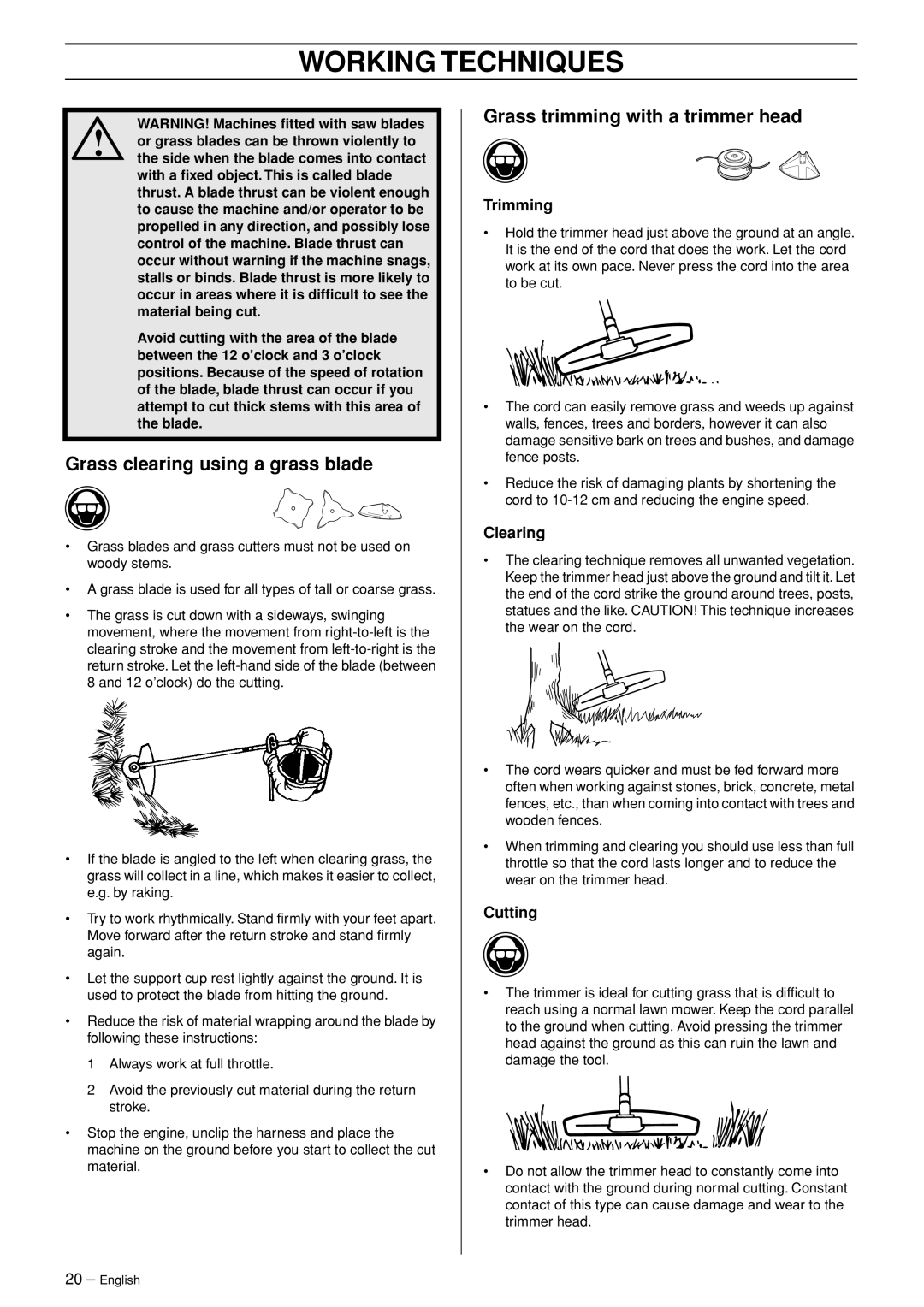GC 2125, GC 2125C specifications
The Jonsered GC 2125C and GC 2125 are exceptional gardening tools engineered to meet the diverse needs of both professionals and hobbyists in lawn care and garden maintenance. These two models stand out for their reliability, versatility, and performance, making them popular choices among garden enthusiasts.One of the main features of the Jonsered GC 2125C and GC 2125 is their powerful engine. Equipped with high-performance two-stroke engines, these models deliver outstanding power and durability, ensuring efficient operation for a variety of tasks, from lawn mowing to trimming overgrown areas. The engines are designed for low fuel consumption and reduced emissions, making them environmentally friendly options.
Both models present a user-friendly design that prioritizes comfort and ease of use. The ergonomic handle provides a comfortable grip and minimizes vibration, allowing for extended use without causing fatigue. The adjustable handle height accommodates users of different sizes, ensuring that everyone can work comfortably.
One key technological advancement incorporated into the Jonsered GC 2125C and GC 2125 is the Smart Start feature. This technology makes starting the engine a straightforward process, requiring less effort from the user. With a simple pull of the starter cord, the engine fires up quickly, which is especially beneficial for those who may struggle with traditional starting mechanisms.
The cutting system in both models features a durable and efficient blade design, coupled with adjustable cutting heights. This adaptability makes it easy to achieve a clean and precise cut, whether tackling thick grass or delicate flowers. The GC 2125C comes with added functionalities, offering users versatility in trimming and mowing with its innovative cutting deck.
Maintenance is made simple with both models; Jonsered prioritizes easy access to crucial engine components, allowing for quick checks and repairs. This commitment to user-friendly maintenance extends to the air filter and spark plug, which can be reached without specialized tools.
In summary, the Jonsered GC 2125C and GC 2125 are robust gardening tools that combine powerful performance, user-centric design, and innovative technologies. Whether used by professionals or gardening enthusiasts, these models excel at delivering efficient, reliable, and environmentally conscious performance for all outdoor maintenance needs.

